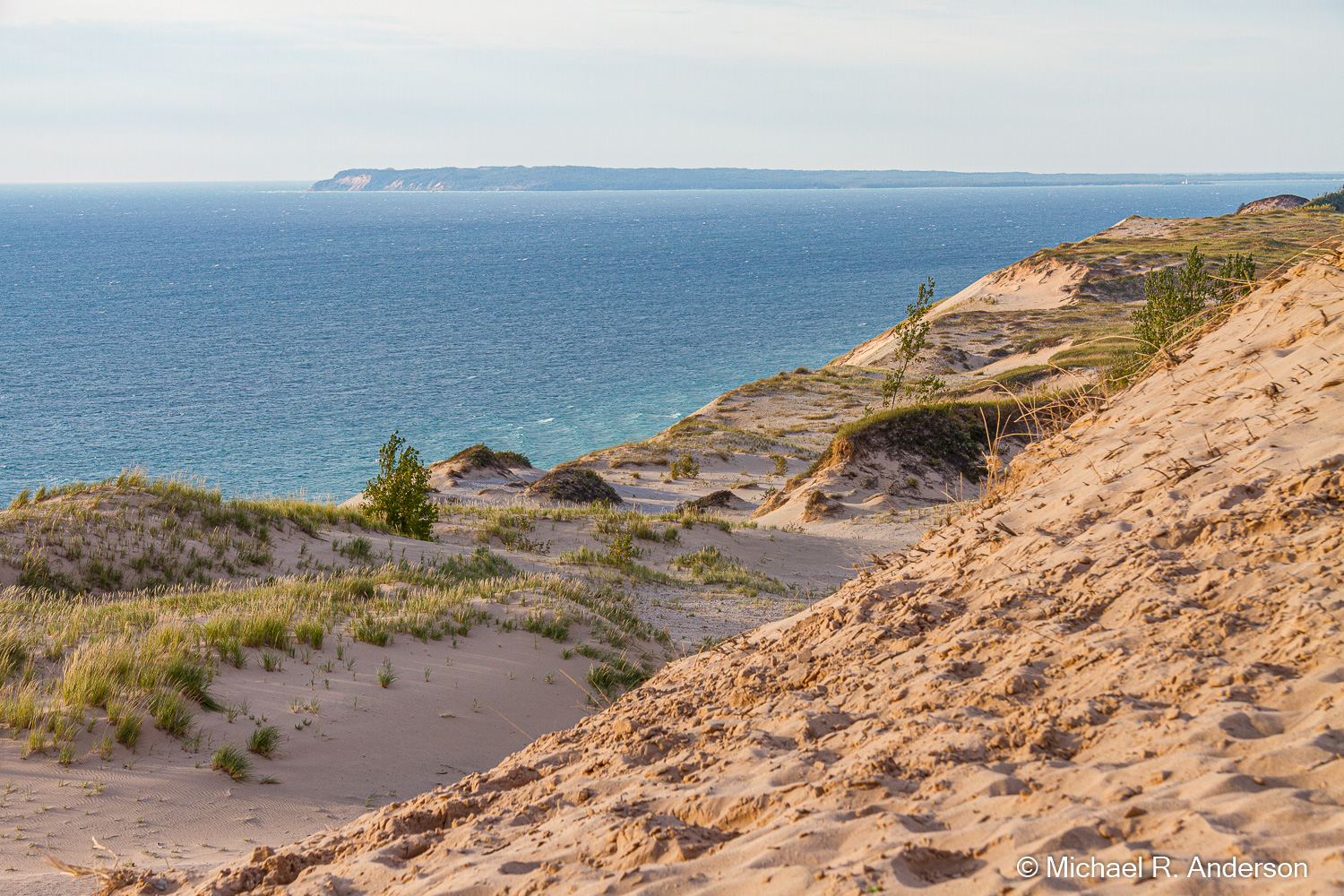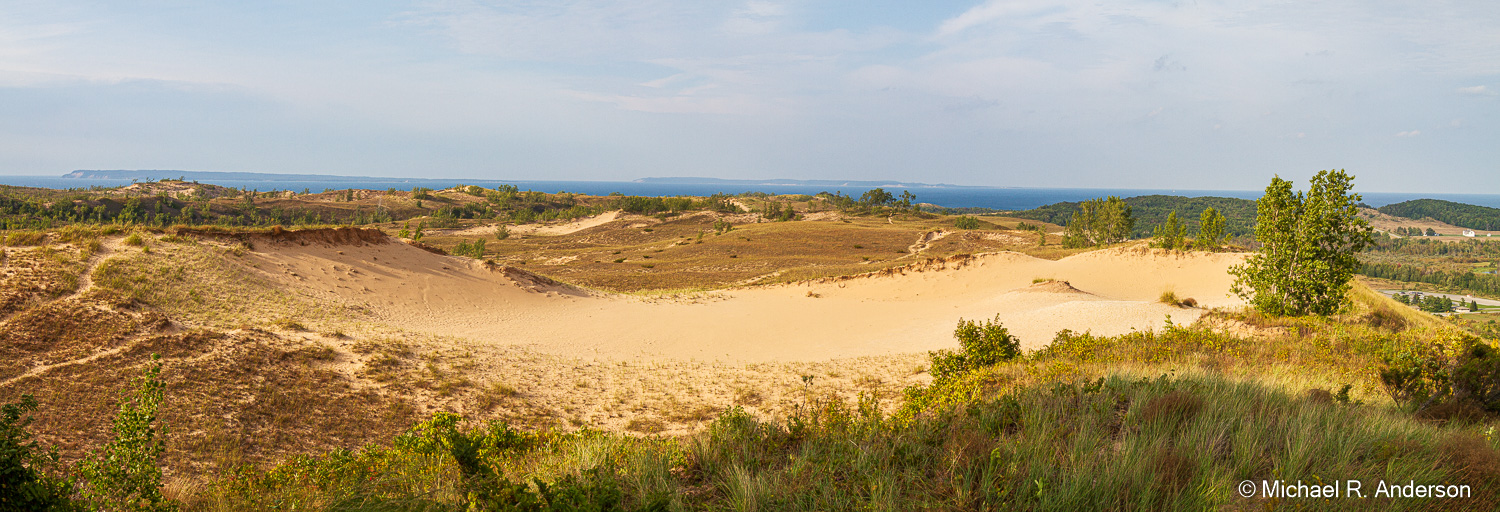From the Mackinac Bridge we headed south through the Lower Peninsula of Michigan. Staying close to the Lake Michigan shore we eventually reached Empire, Michigan, near the entrance to Sleeping Bear Dunes National Lakeshore. One of only three National Lakeshores, Sleeping Bear Dunes was established by Congress on October 21, 1970. It covers 71,198 acres along 35 miles of Lake Michigan’s eastern coastline. The Lakeshore consists of several noncontiguous sections on shore as well as North and South Manitou islands which lie about 6 miles offshore. The islands are not populated, except for park rangers, and are popular spots for camping. Ferry service is available to both islands.

We started our tour of Sleeping Bear Dunes National Lakeshore by driving on the Pierce Stocking Scenic Drive. This road meanders through a Beech-Maple forest and passes over the Pierce Stocking Covered Bridge. Note that “Pierce Stocking” has nothing to do with holey hosiery; it’s the name of a man who loved this area and eventually purchased some of the land and constructed the scenic drive. Along Mr. Stocking’s road you can stop for a beautiful view of Glen Lake, which is actually two large bodies of water connected by a narrow channel. The larger water body is cleverly named “Big Glen Lake.” Not to be outdone, the smaller body is named “Little Glen Lake.”
Farther along the drive we reached the Sleeping Bear Dune Overlook. At one time the shape of the distant dune was a landmark used by the Chippewa Indians. For many years it was about 234 feet high with a dense plant cover. Wave and wind erosion through the twentieth century, however, reduced it to 132 feet by 1961 and 103 feet by 1980. The Park Service didn’t tell me what its height is today.
(Click on any photo to enlarge, then use arrows to scroll through the images.)

The winding road eventually took us to the Lake Michigan Overlook. This overlook sits on top of one of the tallest dunes, about 450 feet high. From here you can look out over Lake Michigan and see North and South Manitou Islands. According to the Park Service, while some dunes are stabilized by plants, the dune fronts that are not stabilized advance about a few feet per year. I didn’t notice much change during our two-day stay.

Not only is the dune very high at the Lake Michigan Overlook, but the dune front along the lake is very steep. As you can see in the first image below (click to enlarge), there are signs that warn you about potential injury and costs for being rescued. The second photo shows a father and son reaching the bottom of the dune.
(Note to photographers: The second photo was not taken with a wide angle lens. It was actually taken at 85mm on a crop sensor lens, which is equivalent to 136mm. Therefore, it’s actually a modest telephoto. And look how far away they are.)
The third photo shows two men struggling to walk up the dune. They might be thinking, “I wonder how much that rescue costs.” While they struggled, I wandered around and photographed golden grass, pink tennis shoes and patterns in the sand.
Sleeping Bear Dunes also contains a lot of history. Glen Haven was a town that started in the mid-19th century. The sawmill was able to provide cord wood to ships that plied the Great Lakes. The Northern Transit Company eventually purchased the town in order to supply the needed cord wood for its 24-vessel fleet. Later there was a blacksmith shop, a cannery, a general store and an inn. Historic Glen Haven still remains today. The blacksmith shop is open for demonstrations and the cannery is now a Great Lakes Boat Museum. The National Park Service has purchased all of the village, although some residents retain occupancy rights.
Just south of Glen Haven there’s a farm with a large white barn and several out-buildings. They were built in the 1880s and 1890s and stand as a reminder of the agricultural heritage in this area. This is the D. H. Day farm. Its 400 acres are where Day grew hay and corn to feed his 400 hogs and prize herd of 200 Holsteins. I would like to have explored the barn and maybe climbed up into the hay mow to relive my youth. However, the farm is still privately owned. That was probably good for my health.